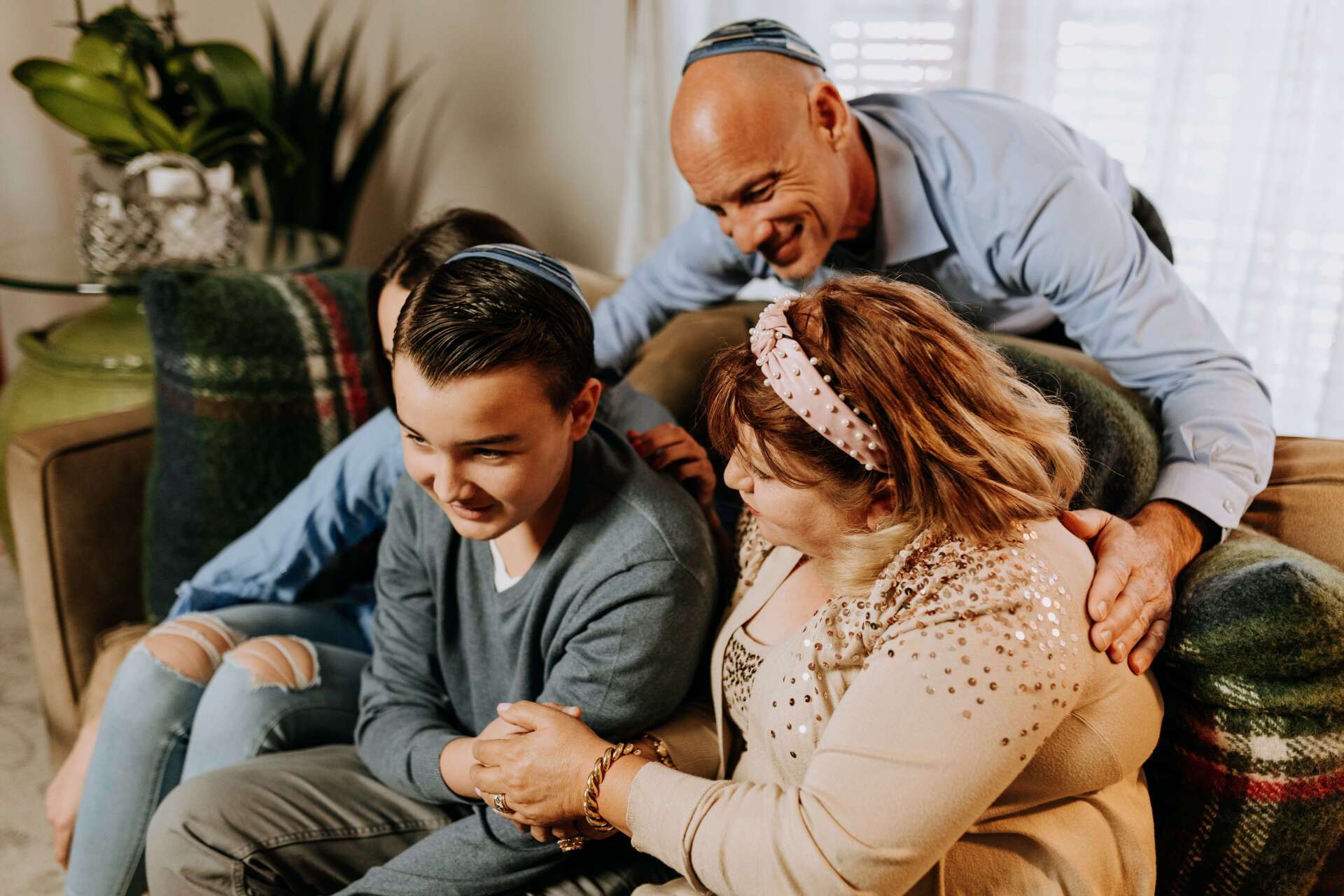Jewish Mourning Customs
Jewish Mourning Customs
Following the death of a family member, Jewish families observe strict Jewish mourning traditions. The purpose of these traditions is to allow for a full expression of grief. The Jewish mourning customs take place in several stages that slowly discourage the excess of grief and will enable the mourner to return to their daily life.

3 Stages of Jewish Mourning Traditions
1.
Aninut
The first period of mourning is known as Aninut and lasts from when the mourner first learns of the death until the burial occurs. When the mourner first hears the news, the traditional response is to tear one’s clothing. If the deceased was a parent the tear is made on the left side over the heart. If the deceased was a relative the tear is made over the right side of the chest.
Until the burial takes place, the mourner's sole responsibility is to care for the deceased. Preparations for the funeral take first priority and the mourner is exempt other religious duties. Because Judaism requires a prompt burial, this first period only lasts a day or two.
2.
Shiva
The second period is known as Shiva (seven) and lasts for seven days following the burial. This period is observed by the parents, children, spouses, and siblings of the deceased. During this time, the family must stay at home for seven days (it is preferred they gather in the home of the deceased). This is when the mourners receive guests looking to offer condolences and participate in daily religious services.
3.
Sheloshim
The third period is Sheloshim (thirty) and lasts until thirty days after the burial. This is the period when mourners are allowed to begin to get back to their normal life. There are still restrictions during this period though such as refraining from attending celebrations like weddings or parties. At the end of the thirty days, it marks the end of the formal Jewish mourning period for most people.
However, if the deceased was a parent, the children must observe a final mourning period known as Avelut. This period extends the restrictions of Sheloshim for an entire year. The son of the deceased is also responsible for reciting the mourner’s Kaddish prayer every day during this period.
Advice When Attending a Jewish Funeral
If you plan to visit a mourner to comfort them and express condolences, there are standard practices for interaction that should be followed. You should allow the mourner to initiate conversation and make sure not to divert it away from talking about the deceased. The purpose of this is to allow the mourner to fully express their grief. It is actually encouraged to try to keep the conversation focused on the deceased to help the mourner through this period.
Are you in the process of planning a Jewish funeral service? Look no further!
We've got you covered with 9 essential traditions and customs to keep in mind before starting the planning process. Plus, you can download our FREE Jewish funeral planning checklist to ensure you don't miss a single detail. Let us help guide you through this challenging time with care and compassion.
Jewish Traditions & Checklist
Yahrzeit Observances
The Jewish mourning tradition of Yahrzeit marks the yearly anniversary of a death. Yahrzeit is observed according to the Hebrew calendar and begins in the evening before the anniversary and lasts until the following sundown. Each year, the family must acknowledge the anniversary of the death. This is called Yahrzeit and is commemorated by the lighting of a candle. The candle burns for twenty-four hours, and the Kaddish prayer is recited.
Remembering that Jewish funeral practices are guided by the family's membership in one of the three Jewish movements–Orthodox, Conservative, or Reform, we can easily understand that there would be variations in how Yahrzeit is observed.
With that said, traditionally, the observance of Yahrzeit takes place in different locations: the home, the synagogue, and the cemetery; and is observed by three distinct activities: the lighting of candles, the recitation of prayer, and a generous charitable action.
The first Yahrzeit observance involved the recitation of the Mourner's Kaddish prayer at the synagogue with a minyan, the traditional quorum of ten Jewish adult men required for certain religious obligations. However, non-Orthodox streams of Judaism allow adult females to participate in the minyan. This is done at morning, afternoon, and evening services. In addition, if there is a memorial Yahrzeit plaque for the deceased at the synagogue, its light will be ceremonially lit in recognition of this anniversary.
The second observance occurs at home, where the mourners light a candle or memorial lamp to commemorate their death. The other location for Yahrzeit observances is the deceased's grave, where visitors recite proscribed prayers.
The third Yahrzeit observance involves charitable giving, or Tzedakah, which has long been a part of Judaic tradition. So much so that Rabbi Bradley Shavit Artson wrote, "Tzedakah is not about giving; Tzedakah is about being." The practice of Tzedakah, as it relates to Yahrzeit, involves making a charitable donation in memory of the deceased.